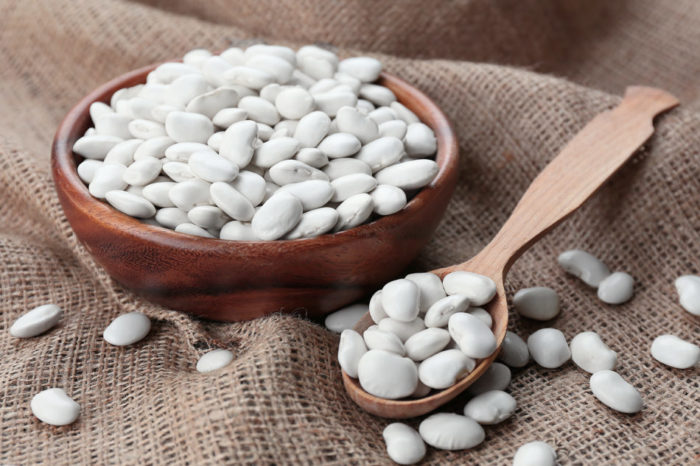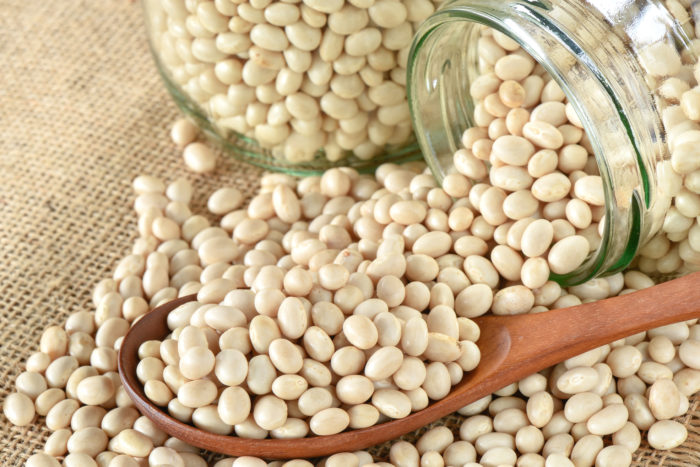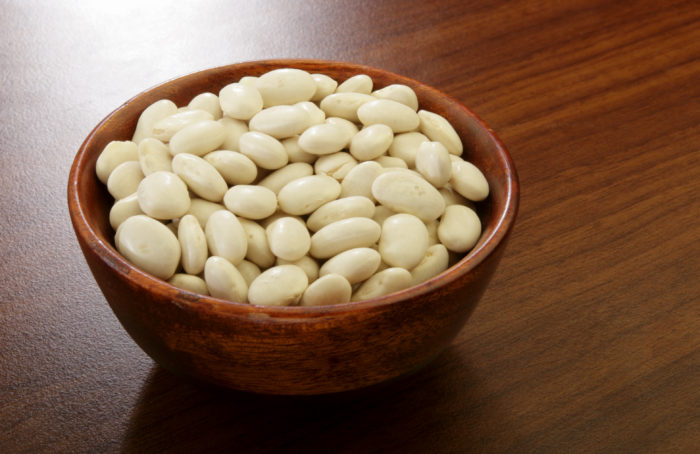
If you’re like me, you probably LOVE butter beans. They are so creamy and delicious! But what do you do if you’re out of butter beans or don’t want to use them in a recipe? Never fear, there are plenty of substitutes for butter beans that will still make your dish taste great!
The best alternatives are cannellini beans, white kidney beans, navy beans, fava beans, great northern beans, flageolet beans, borlotti beans, pinto beans, red kidney beans and chickpeas.
Check out this list and see which one works best for you. Happy cooking!
1. Cannellini Beans
Cannellini beans are one of the most popular white beans. They are used interchangeably with butter beans as they have similar features including the color, flavor and texture.
Of course they are larger in size but it doesn’t forbid you to prepare your favorite butter bean dishes if you have run out of butter beans. Cannellini beans are perfect for soups, stews and salads. You need to soak them beforehand to reduce the cooking time.
2. White Kidney Beans
There are white and red kidney beans and if white kidney beans are available in your stores you can use them instead of butter beans too. These are firmer in texture but if you cook them long they will provide the desired creamy and buttery result similar to butter beans.
Compared with red beans white kidney beans come with a milder flavor, therefore they are more suitable alternatives to butter beans. By the way, they won’t change the color of your dish if that matters.
3. Navy Beans

Navy beans are other white beans that offer a creamy texture when cooked, so they are good replacers for butter beans too.
They are used in salads, stews and soups and have a slightly nutty flavor.
4. Fava Beans
Choose fava beans instead of butter beans for a number of dishes. These are so similar that you may hardly notice a difference in taste or texture. They are both white and taste creamy, earthy and nutty. However, some people describe fava beans as cheesy in taste.
Compared to many other beans, they are less starchy. Just make sure to peel them before using in your dish as they have a tough skin.
5. Great Northern Beans

Great northern beans are other popular white beans with a mild, slightly nutty and delicate flavor compared to butter beans. They are larger in size like cannellini beans but have a tougher skin.
If you cook them properly they will become quite soft for creamy soups and stews. They are also great for salads and casseroles. These beans tend to absorb accompanied flavors.
6. Flageolet Beans
Flageolet beans are usually used in soups, salads, side dishes and dips. They are a variety of white beans and have similarities to butter beans.
Since they are small in size and tender in texture, they easily absorb other flavors and become creamy in dishes. You can eat cooked flageolet beans on their own just adding butter or olive oil and seasonings.
7. Borlotti Beans
Borlotti beans are similar to pinto beans and kidney beans. They are white with pink-reddish dots and have rich creaminess and smooth texture. They are perfect for salads and casseroles.
You may need to soak dry borlotti beans to cook shorter and reach the best result.
8. Pinto Beans
These light brown beans are a type of common beans and they are easy to find in grocery stores. You can consider them wherever you don’t have butter beans for a particular recipe.
Pinto beans have a nutty and creamy taste. Soak them overnight to make them even softer when cooking.
9. Red Kidney Beans
In case, you can’t find white beans or white kidney beans, red kidney beans are there for you. These are easier substitutes for butter beans. They become soft and buttery when cooked and you can use them in many dishes that call for butter beans.
The only thing to consider is the color but if it doesn’t matter, then enjoy a colorful dish with its earthy and slightly sweet taste.
10. Chickpeeas
Whether canned or dried, chickpeas are often used as bean substitutes, especially when the thing is about white beans. Of course, they have different shape, taste and texture but you can reach a similar flavor if you add appropriate seasonings to cooked chickpeas.
They are nutritious types of legumes that work well in soups and mashed dishes. If you want a creamy texture for a mashed meal, then you can safely use them instead of butter beans.
FAQs Abou butter beans
Are cannellini beans the same as butter beans?
Butter beans, also called lima beans, are a variety of Phaseolus lunatus. They are large, white, and have a buttery texture. Cannellini beans are a variety of Phaseolus vulgaris. They are small, white, and have a starchy texture.
Both varieties of beans are common in Mediterranean and Latin American cuisine. While they have different textures, cannellini and butter beans can be used interchangeably in many recipes.
Are white kidney beans and butter beans the same?
No, they are not the same. White kidney beans have a milder flavor and butter beans have a nuttier flavor. They can be used interchangeably in recipes, but the flavor will be different.
What do butter beans taste like?
Well, they’re actually pretty similar to Great Northern beans in terms of flavor. They’re both fairly mild, with a slightly nutty taste. However, butter beans are a bit creamier and have a softer texture.
Are canned butter beans already cooked?
Most canned butter beans are already cooked, though there may be some that are not. If you’re unsure, it’s always best to check the label or cooking instructions.
Canned butter beans are a great addition to any meal because they’re quick and easy to prepare. Just open the can and heat them up, and you’re good to go.
Plus, they’re a great source of protein and fiber. So next time you’re looking for a quick and easy side dish, reach for a can of butter beans.
Summing up
All in all, all these beans are great substitutes for butter beans. They have a similar creamy texture and taste that makes them perfect for soups, dips, and spreads. Give them a try the next time you’re looking for a new bean to work with!
